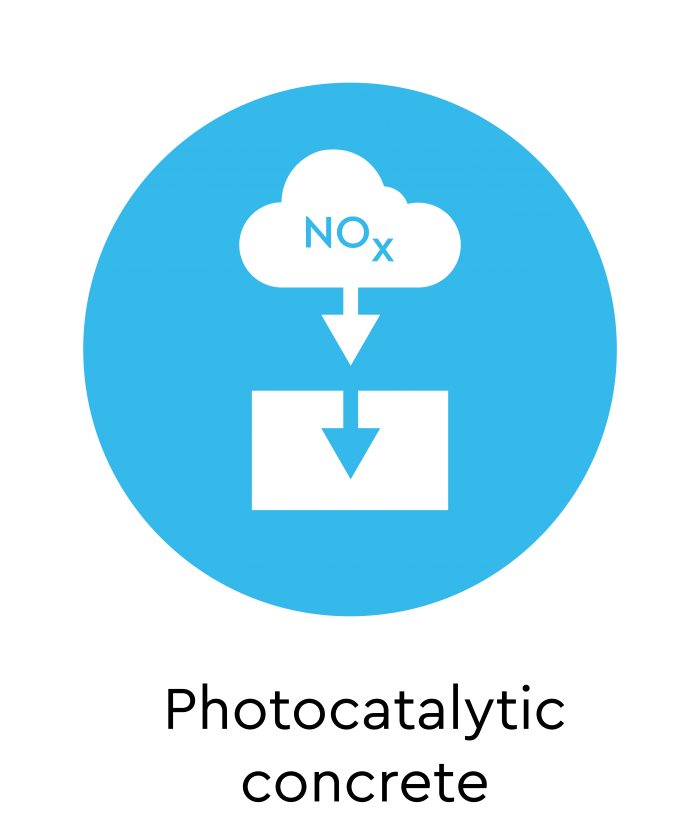
The use of photocatalytic concrete can help remove air pollutants, providing clean air in our cities and towns.
Concrete is hard wearing and versatile, which means it is widely used in urban contexts. This gives scope for its use for additional purposes, such as for the removal of air pollutants. Clean air is considered a basic requirement for human health and well-being. However, air pollution continues to pose a significant threat to health worldwide. Air pollution is a set of toxic effects that alter the biosphere with repercussions for human beings. Such harmful effects depend on the action of agents that, once released into the air, modify the existing equilibrium.
Numerous studies affirm that exposure to high levels of air pollution is associated with cardiovascular and respiratory diseases. According to the World Health Organization (WHO), 4.2 million premature deaths worldwide in 2016 are attributed to ambient air pollution. More than one in every four deaths of children under 5 years is directly or indirectly related to environmental risks. Both ambient air pollution and household air pollution contributed to respiratory tract infections that resulted in 543,000 deaths in children under 5 years in 2016.
One solution to this challenge is heterogeneous photocatalysis (e.g., gas–solid or liquid–solid catalytic processes caused by light irradiation) by semiconductor particles or coatings. The application of such photocatalysts in concrete is well-established; despite this, photocatalytic concretes are still not in mainstream application.
For good photocatalytic effectiveness, the following conditions must be satisfied:
- The presence of relatively high concentrations of NOX and other polluting agents (e.g. inorganic compounds, such as SOX, CO, NH3, and organics CH3OH; C2H5OH, CH2Cl2, CHCl3, chlorobenzene, chlorophenol, toluene, and ethylbenzene; etc).
- Daylight, or, as an alternative, an acceptable amount of UV light (for indoor applications).
- Regular rinsing either with rain or cleaning water to wash away the reaction products (e.g. nitrates and carbonates).
The ideal places for utilising photocatalytic concrete are busy streets and high traffic lanes; parking lots, intersections and squares; and gas stations and toll roads.
Header photo by Paul Mocan on Unsplash